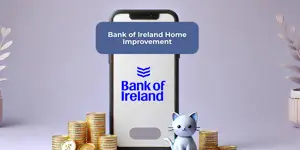
Every financial choice you make can shape your long-term stability and peace of mind. With options ranging from revolving credit cards to installment-based personal loans, understanding which tool suits each situation is crucial.
This comprehensive guide will walk you through the differences, weigh the benefits and drawbacks, and offer a clear decision framework so you can make choices that align with your goals and budget.
At their core, personal loans and credit cards serve different needs. A personal loan delivers a lump sum upfront, fixed timeline for repayment, usually over 2–7 years. You repay with fixed monthly payments that never change, allowing precise budgeting.
Credit cards provide a revolving line of credit for ongoing purchases. You can borrow and repay repeatedly up to your limit. While this flexibility can be valuable for everyday expenses, it can also lead to variable costs.
Interest rates further distinguish these products. Personal loans often feature lower, fixed APRs (average 12.33% for 24 months as of August 2024), while credit cards carry higher, variable APRs (average 23.00%). Fees also differ: origination and prepayment fees versus annual, late, and transfer fees.
Personal loans can be the smarter choice under several circumstances, offering stability and lower overall interest costs.
For example, consolidating $40,000 of credit card debt at 21.91% into a personal loan at 16.32% saves about $7,390 in interest over five years. A structured loan can simplify monthly payments into one statement and instill discipline.
Credit cards remain unbeatable for everyday spending and short-term financing—especially when used responsibly.
If you can maximize cash-back rewards every purchase and pay in full each month, a credit card can be essentially interest-free. Its avoid unpredictable interest rate hikes however demands strong spending discipline.
Comparing typical features side by side can highlight the best fit for your needs. Keep in mind your credit score, income, and overall debt load when evaluating offers.
Neither option is risk-free. Personal loans can carry origination fees that tempt overspending without spending discipline. Locked-in terms may become cumbersome if your cash flow changes suddenly.
Credit cards, with high APRs, can high rates can trap borrowers in cycles of minimum payments. Excessive utilization also damages your credit score, while late or over-limit fees quickly add up.
Develop a personalized checklist before deciding. Reflect on your upcoming expenses, repayment capacity, and credit objectives.
Matching your priorities to each product’s strengths is key. If you crave discipline and predictability, a personal loan may lead to success. For ongoing spending needs and rewards, a credit card can be more advantageous.
Whichever path you choose, these strategies will help you optimize your financing.
First, track your monthly spending patterns in detail. Understanding where your money goes will inform whether a one-time loan or a revolving account makes more sense.
Next, shop for the best APR deals. Compare offers from banks, credit unions, and online lenders. Small rate differences can save hundreds or thousands over time.
Finally, maintain an emergency buffer fund to avoid relying too heavily on high-interest credit during unexpected setbacks.
Choosing between a personal loan and a credit card doesn’t have to be overwhelming. By weighing rates, fees, flexibility, and repayment structure, you can regain control of your financial future and navigate expenses with confidence.
Whether you’re consolidating debt, funding a renovation, or optimizing everyday spending, aligning the right product to your goals will empower you to build lasting financial health.
References













